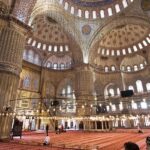Tucked away in the farthest corner of Dolpa District, Shey Phoksundo National Park is a paradise for nature lovers, adventurers, and cultural enthusiasts. This hosts ecosystems, from alpine to dense forests, with rare wildlife species and breathtaking landscapes, and the deepest lake in Nepal, Phoksundo Lake. It was established in 1984 and covers an area of 3,555 square kilometres, making it the largest national park in Nepal. The park offers a unique blend of natural beauty with cultural heritage, for an off-the-beaten-path experience.
Location
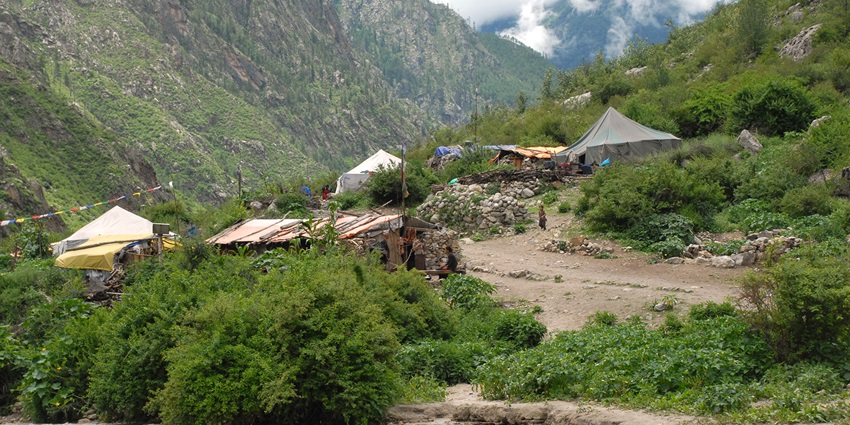
Photo: Sergey Pashko / Wikimedia Commons
The Shey Phoksundo National Park is situated in the Dolpa and Mugu districts of western Nepal, south of the Tibetan Plateau. It has extensive land running along the Trans-Himalayan region, from 2,130 metres to 6,883 metres at its highest peak, Kanjiroba Himal. The most fundamental feature of this park is the beautiful Phoksundo Lake, popular for its stunning turquoise water. The park is 600 kilometres northwest of Kathmandu, making it one of Nepal’s most remote national parks.
Suggested Read: Adventure Sports In Nepal For Every Adrenaline Junkie
How To Reach Shey Phoksundo National Park
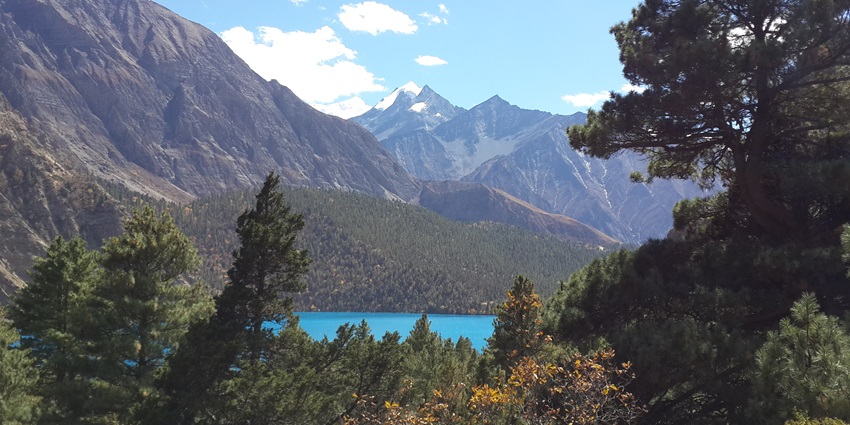
Photo: Outlaw Django / Wikimedia Commons
Reaching Phoksundo National Park is an adventure in itself, as the park’s remote location makes it accessible by only a few modes of transport:
By Air: Air transportation is the most convenient way to reach the park. One can take a flight from Kathmandu, the capital city of Nepal, to Nepalgunj, a western town in the country. From there, at Nepalgunj, take another connecting flight to Juphal. Juphal is considered the nearest airport to Shey Phoksundo National Park. It takes approximately 35 minutes by flight from Nepaljung to Juphal. Juphal is the park’s gateway, and from here, one can start at Phoksundo Lake and other areas of this park.
By Bus: The drive to the park is long. First, you’ll need to take a bus from Kathmandu to Nepalgunj, which runs for 12 to 14 hours. From Nepalgunj, another 10 hours by local bus or jeep will bring you to Juphal.
By Rail: Currently, there is no direct rail service to Shey Phoksundo National Park. However, trains from India can be taken to Gorakhpur or Raxaul, the nearest railway station along the Indian border. From there, you can travel by bus or car to Nepalgunj and continue your journey to the park by air or road.
Places To Visit In Shey Phoksundo National Park
After exploring Shey Phoksundo Nepal national park activities, visit the numerous other attractions around:
1. Phoksundo Lake
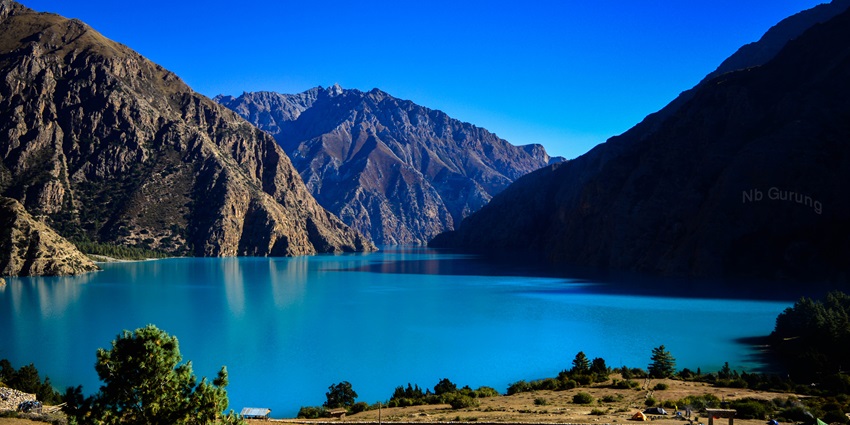
Photo: Nirgrg / Wikimedia Commons
Phoksundo Lake is the crown jewel of Shey Phoksundo National Park. Known for its crystal-clear, turquoise waters, the lake is the deepest in Nepal, reaching 145 metres. Surrounded by snow-capped mountains and lush forests, Phoksundo Lake is a serene and picturesque spot that leaves a lasting impression on all who visit. The local Bonpo religion also considers the lake sacred, with ancient monasteries and stupas dotting its shores. The breathtaking scenery and calm atmosphere make it a perfect spot for meditation and photography, drawing nature lovers, trekkers, and spiritual seekers worldwide.
Timings: 24*7
Entry Fee: Included in the park entrance fee
Suggested Read: Explore Top Wildlife Sanctuaries In Nepal For An Adventurous Retreat
2. Shey Gompa
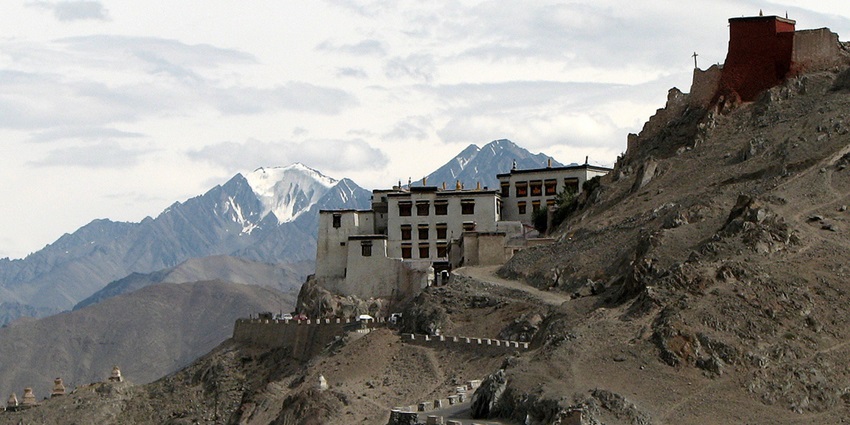
Photo: Karunakar Rayker / Wikimedia Commons
Shey Gompa, also known as the Crystal Mountain Monastery, is one of the most significant spiritual sites within the park. Located at the sacred Crystal Mountain base, this ancient monastery is a pilgrimage centre for Bonpo and Buddhist followers. The gompa is believed to have been established in the 11th century and offers a glimpse into the spiritual traditions of the Dolpo region. The trek to Shey Gompa is challenging, taking you through rugged terrains and high mountain passes, but the spiritual ambience and the stunning views of the surrounding landscape make the effort well worth it.
Timings: Sunrise to Sunset
Entry Fee: Included in the park entrance fee
3. Ringmo Village
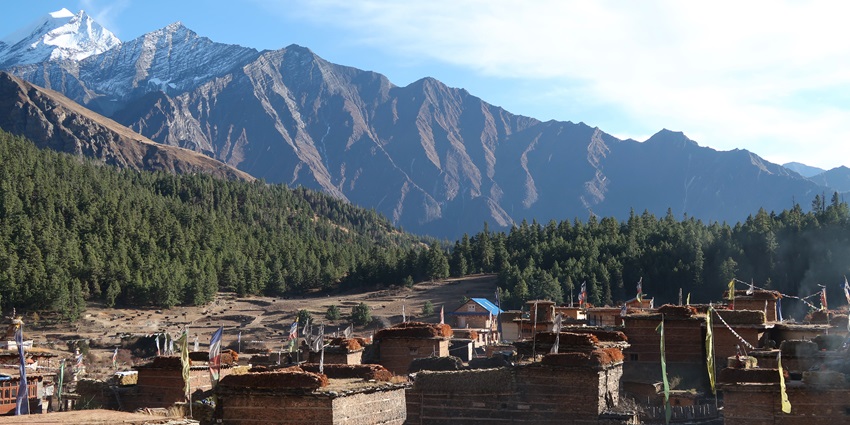
Photo: Rucksackschule-dresden / Wikimedia Commons
Ringmo Village is a traditional Tibetan village located near Phoksundo Lake. The village is home to a small community of Dolpo-pa people, who have preserved their unique culture and way of life for centuries. It offers an opportunity to experience the local culture, including traditional Tibetan architecture, ancient monasteries, and the unique Bonpo religion. The village’s proximity to Phoksundo Lake makes it a popular trekking stop. Here, visitors can engage with the locals, learn about their customs, and explore the centuries-old houses built in the traditional Tibetan style, making it a culturally enriching experience that complements the area’s natural beauty.
Timings: Open 24 hours
Entry Fee: Included in the park entrance fee
Suggested Read: Amazing Things To Do In Kathmandu In July During Monsoon
4. Kanjiroba Himal
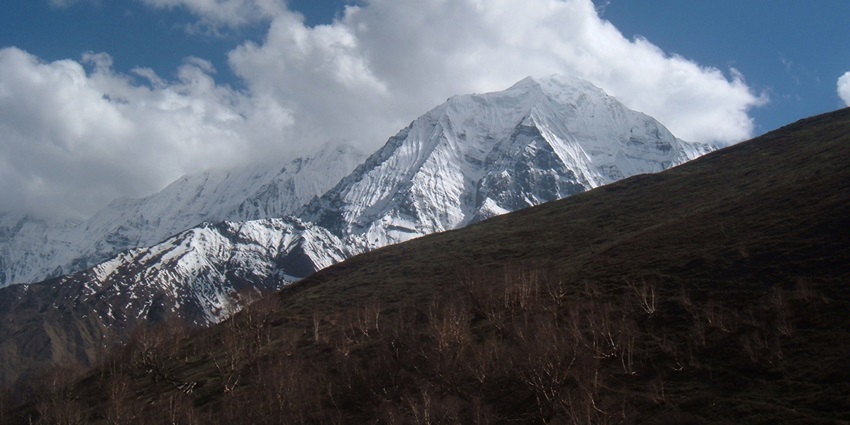
Photo: Passangdolpo / Wikimedia Commons
Kanjiroba Himal is the highest peak in Shey Phoksundo National Park, at 6,883 metres. The mountain is challenging, attracting experienced mountaineers worldwide who seek to conquer its rugged slopes. For those not interested in climbing, the surrounding area offers some of the most stunning trekking routes in the park, with breathtaking views of the Himalayas and the Trans-Himalayan plateau. The region is also home to rare wildlife, including the elusive snow leopard and the blue sheep. Trekkers can enjoy panoramic vistas, explore remote valleys, and immerse themselves in the pristine beauty of one of Nepal’s most unspoiled wilderness areas.
Timings: Sunrise to Sunset
Entry Fee: Included in the park entrance fee
Where To Stay
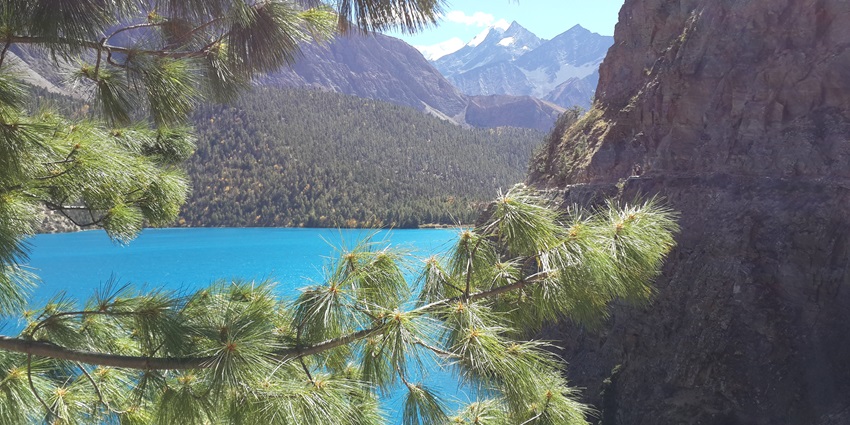
Photo: Outlaw Django / Wikimedia Commons / Image For Representation Only
Due to its remote location, accommodation options within Shey Phoksundo National Park are limited. However, a few basic lodges and teahouses are available in Juphal, Dunai, and Ringmo Village. These lodges offer simple yet comfortable facilities, including beds, meals, and hot showers. For a more immersive experience, you can also opt for camping, which allows you to connect more deeply with the natural surroundings.
Suggested Read: Water Parks In Kathmandu For A Refreshing And Exciting Day
Where To Eat
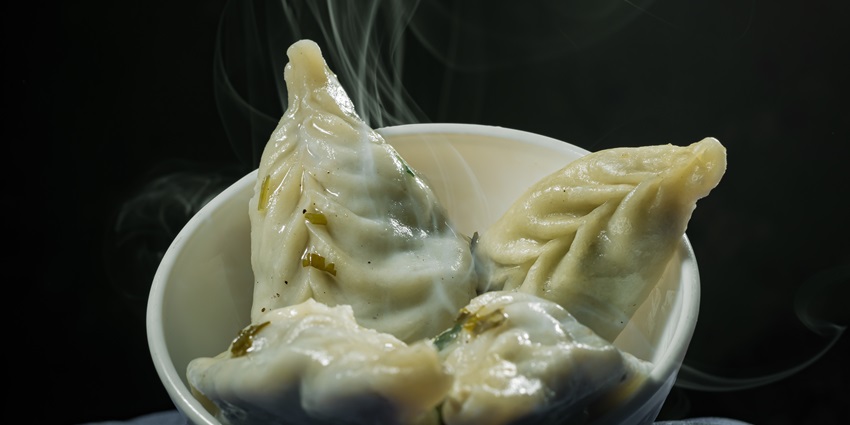
Photo: TAPAS KUMAR HALDER / Wikimedia Commons / Image For Representation Only
Dining options in Phoksundo National Park are basic but satisfying. The lodges and teahouses in Juphal, Dunai, and Ringmo Village serve traditional Nepali and Tibetan cuisine, including dishes like dal Bhat (lentil soup with rice), momos (dumplings), and tsampa (roasted barley flour). Carrying snacks and energy bars with you is recommended, as food availability can be limited, especially in more remote areas of the park.
Best Time To Visit
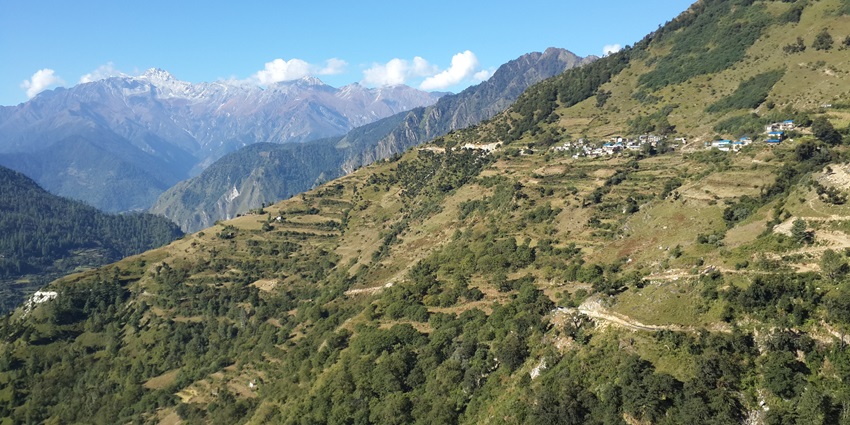
Photo: Outlaw Django / Wikimedia Commons
The best time to visit Shey Phoksundo National Park is during the spring (March to May) and autumn (September to November) seasons. During these months, the weather is relatively stable, with clear skies and moderate temperatures, making it ideal for trekking and sightseeing. Shey Phoksundo National Park timings are 10 AM to 5 PM.
Suggested Read: Amazing Places To Visit In Lumbini
Other Factors To Consider
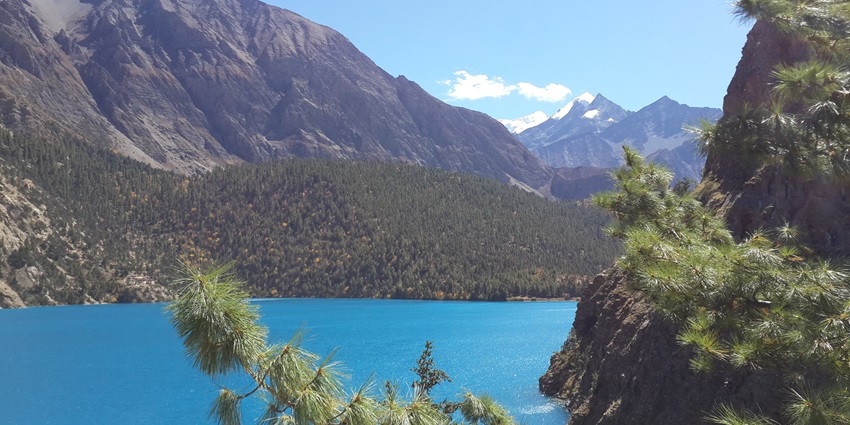
Photo: Outlaw Django / Wikimedia Commons
Average Cost Of The Trip
The average trip cost to Phoksundo National Park can vary depending on your travel style and duration. For a budget traveller, the cost can range between ₹20,000 to ₹30,000 for a week, including transportation, accommodation, park entry fees, and basic meals. Shey Phoksundo National Park ticket price is NPR 3,000 / ₹1,900 for foreigners, NPR 1,500 / ₹950 for SAARC nationals and NPR 100 / about ₹65 for Nepali nationals.
Tips For Travellers
- Ensure you obtain the necessary permits, including the Shey Phoksundo National Park entry permit and a TIMS (Trekkers’ Information Management System) card.
- Be prepared for strenuous trekking.
- Take it slow and stay hydrated at all times.
- Don’t forget to click Shey Phoksundo National Park photos for memories.
- Carry warm clothing, sturdy trekking boots, and essential supplies.
- The Dolpo region has a rich cultural heritage. Respect local customs and traditions.
Shey Phoksundo National Park is a destination offering a unique blend of natural beauty and cultural richness. From the stunning Phoksundo Lake to the ancient monasteries and towering peaks, the park is a treasure trove for adventurers and spiritual seekers. Plan your trip with TripXL today and embark on an unforgettable journey to explore the hidden gems of this remote Himalayan wilderness.
Cover Photo: Passangdolpo / Wikimedia Commons


 WhatsApp
WhatsApp
 Twitter
Twitter



